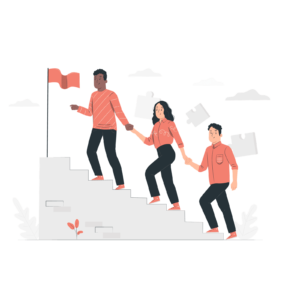Introduction
In a world where employees increasingly seek meaning and fulfillment in their work, the conventional approach to employee benefits is evolving. No longer can organizations rely solely on standard packages that may not resonate with every individual. Instead, customizable employee benefits are gaining traction as a powerful way to enhance engagement and satisfaction.
By allowing employees to tailor their benefits to suit their lifestyles and preferences, organizations can create a more inclusive workplace. This flexibility not only meets the diverse needs of today’s workforce but also fosters a sense of ownership and loyalty. When people feel their personal needs are considered, they are more likely to contribute their best efforts to their roles.
In this blog, we will delve into the relationship between customizable workplace benefits and employee engagement. We will explore how these tailored options can lead to increased satisfaction, retention, and productivity. This ultimately shapes a more motivated and committed workforce.
Understanding Employee Engagement

Definition: Employee engagement refers to the emotional commitment and involvement that employees have toward their organization and its goals. It encompasses several key components:
- Commitment: Engaged employees feel a strong sense of loyalty to their organization. They are willing to go above and beyond their basic job requirements and invest their time and energy in the company’s success.
- Motivation: This component reflects the intrinsic drive to perform well. Engaged employees are motivated not only by external rewards but also by personal fulfillment and the desire to contribute meaningfully to their team and organization.
- Satisfaction: Job satisfaction is a critical element of engagement. When employees are satisfied with their roles, responsibilities, and working conditions, they are more likely to feel engaged and connected to their work.
Importance: The significance of employee engagement cannot be overstated. Highly engaged employees contribute positively to the workplace in various ways:
- Increased Productivity: Engaged employees are more focused and productive. Their commitment to their roles often leads to higher levels of output and creativity, benefiting the organization as a whole.
- Improved Retention Rates: Organizations with high levels of employee engagement experience lower turnover rates. Engaged employees are less likely to seek opportunities elsewhere, reducing recruitment and training costs.
- Enhanced Workplace Morale: Engagement fosters a positive work environment. When employees feel connected and motivated, it creates a culture of collaboration and support. This can lead to higher overall morale among teams.
Understanding and fostering employee engagement is crucial for organizations aiming to create a thriving workplace culture. And in order to thrive, employees must feel valued and motivated.
The Role of Employee Benefits in Engagement

Traditional vs. Customizable Benefits:
Traditionally, employee benefits have been designed as one-size-fits-all packages, offering a set of standard options such as health insurance, retirement plans, and paid time off. While these benefits provide essential support, they often fail to address the diverse needs and preferences of a modern workforce. For example, a single health plan may not suit the varying family situations or health requirements of all employees.
In contrast, customizable employee benefits allow individuals to select options that resonate with their unique circumstances. This flexibility can include a range of offerings, from wellness programs and mental health resources to flexible working arrangements and professional development opportunities. By catering to individual preferences, customizable benefits create a more inclusive environment that recognizes and respects the diverse lifestyles of employees.
Impact on Satisfaction:
Impact on Satisfaction: Benefits that are tailored to individual needs significantly enhance job satisfaction. When employees have the ability to choose benefits that align with their personal and professional goals, they feel more empowered and valued. In fact, a survey by Willis Towers Watson found that 83% of employees are more engaged when their benefits meet their personal needs. This sense of ownership leads to several positive outcomes:
- Increased Relevance: Employees are more likely to engage with benefits that directly impact their lives, whether it’s a wellness program that encourages healthy habits or professional development opportunities that foster career growth.
- Greater Emotional Connection: Customizable benefits foster a stronger emotional connection to the organization. When employees see that their employer understands and supports their unique needs, it cultivates loyalty and satisfaction.
- Enhanced Work-Life Balance: Employees who can choose benefits that promote a healthy work-life balance—such as flexible hours or remote work options—report higher levels of satisfaction and well-being. This balance not only improves individual happiness but also contributes to a more productive workplace.
Overall, the role of employee benefits in fostering engagement is significant. By moving towards customizable options, organizations can create a more satisfying and supportive environment that enhances employee commitment and motivation.
Benefits of Customizable Employee Benefits

Increased Flexibility: Customizable employee benefits offer significant flexibility. Employees can choose options that fit their lifestyles, preferences, and circumstances. Whether it’s selecting specific health plans, opting for wellness programs, or choosing flexible work arrangements, this personalization empowers employees. As a result, they are more likely to engage with and utilize the benefits available to them.
Enhanced Personalization: Personalization is key to making employees feel valued. When organizations allow customization of benefits, it shows that they care about employee well-being. This tailored approach builds a stronger emotional connection between employees and the organization. As a result, job satisfaction and loyalty increase. Employees who feel their personal needs are acknowledged are more likely to stay committed to their employer.
Greater Retention Rates: Customizable benefits can lead to lower turnover and higher retention rates. Organizations that offer flexible benefits often see improved employee retention. When employees can choose benefits that align with their goals, they feel more satisfied and engaged. This satisfaction reduces the likelihood of them seeking other job opportunities.
Attraction of Top Talent: Attracting skilled candidates today requires more than competitive salaries. Customizable employee benefits are becoming crucial for job seekers. Organizations that provide personalized benefits stand out, especially to those who value flexibility and work-life balance. By meeting diverse employee needs, companies can attract and retain top talent, enhancing workforce quality.
In summary, customizable employee benefits offer numerous advantages. They contribute to a more engaged and satisfied workforce. By prioritizing flexibility, personalization, retention, and talent attraction, organizations can create a culture that meets employee needs and drives success.
Examples of Customizable Benefits

Wellness Programs: Customizable wellness programs can significantly enhance employee health and engagement. Options may include:
- Gym Memberships: Employees can choose from various local gyms or fitness centers, promoting physical health and encouraging regular exercise.
- Mental Health Resources: Access to counseling services, mental health days, and stress management workshops allows employees to prioritize their mental well-being.
- Wellness Challenges: Organizations can offer participation in fitness challenges or health-oriented competitions that employees can customize to suit their interests, fostering teamwork and motivation.
Flexible Work Arrangements: Flexibility in work arrangements allows employees to balance their professional and personal lives more effectively. Common options include:
- Remote Work: Employees can choose to work from home or another location, reducing commute times and allowing for a more comfortable work environment.
- Flexible Hours: Allowing employees to set their own schedules helps accommodate personal commitments, increasing job satisfaction and productivity.
- Compressed Workweeks: This option enables employees to work their required hours over fewer days, giving them longer weekends and more personal time.
Professional Development: Investing in employees’ growth through customizable professional development options can enhance engagement and retention. This includes:
- Training Opportunities: Employees can select training programs or workshops that align with their career goals and interests.
- Courses and Certifications: Offering reimbursements for courses or certifications allows employees to pursue further education that benefits both their personal growth and the organization.
- Mentorship Programs: Customizable mentorship initiatives connect employees with mentors who can guide their professional development based on individual aspirations.
Family Support Options: Recognizing the importance of family, customizable benefits can provide essential support. These may include:
- Childcare Support: Offering subsidies or partnerships with local childcare providers helps employees manage their family responsibilities while remaining focused at work.
- Parental Leave: Providing flexible parental leave options allows employees to take the necessary time off to bond with their new child without added stress.
- Eldercare Resources: Access to resources or financial support for eldercare can help employees care for aging family members while managing their work commitments.
By incorporating these customizable benefits, organizations can create a supportive environment that addresses the diverse needs of their workforce, ultimately enhancing engagement and satisfaction.
Implementing Customizable Benefits

Assess Employee Needs: To effectively implement customizable benefits, organizations must first understand the preferences and needs of their employees. Conducting surveys or focus groups can provide valuable insights into what employees truly value in their benefits packages. This process not only identifies specific needs but also fosters a sense of involvement among employees, making them feel heard and appreciated. Regularly gathering feedback ensures that the benefits offered remain relevant and aligned with the evolving needs of the workforce.
Partner with Benefits Providers: Collaborating with benefits providers that offer flexible options is crucial for successfully implementing customizable benefits. Organizations should seek out providers that allow for a diverse range of benefits and the ability to tailor packages to employees. By establishing partnerships with providers that understand the importance of customization, companies can ensure they are delivering options that truly meet their employees’ needs, enhancing overall satisfaction and engagement.
Communication Strategy: A clear and effective communication strategy is essential for informing employees about available benefits and how to customize them. Organizations should:
- Create Informative Materials: Develop easy-to-understand guides or brochures outlining the benefits offered and how employees can choose or adjust their options.
- Utilize Multiple Channels: Leverage various communication channels, such as emails, intranet platforms, and workshops, to reach employees and ensure that information is accessible to everyone.
- Encourage Open Dialogue: Foster an environment where employees feel comfortable asking questions and discussing their benefits options. Regular Q&A sessions or informational meetings can help clarify any uncertainties and reinforce the value of the customizable benefits.
By assessing employee needs, partnering with flexible benefits providers, and implementing a robust communication strategy, organizations can successfully create and promote a customizable benefits program that enhances employee engagement and satisfaction.
Measuring the Impact on Engagement

Employee Feedback: Gathering feedback is crucial for assessing the effectiveness of customizable benefits. Organizations should regularly solicit input from employees to understand their experiences with the benefits offered and identify areas for improvement. This feedback can be collected through surveys, focus groups, or informal check-ins. Engaging employees in this dialogue not only provides valuable insights but also demonstrates that the organization values their opinions and is committed to enhancing their benefits experience.
Engagement Metrics: To effectively measure the impact of customizable benefits on employee engagement, organizations should track specific metrics, including:
- Employee Satisfaction Surveys: Regularly administering surveys can gauge overall satisfaction with benefits and how well they meet individual needs. These surveys can also include questions related to job satisfaction and motivation, providing a comprehensive view of employee engagement.
- Turnover Rates: Monitoring turnover rates before and after implementing customizable benefits can help determine their effectiveness in retaining talent. A decrease in turnover may indicate that employees feel more satisfied and valued, contributing to higher engagement levels.
- Participation Rates: Tracking the utilization of customizable benefits can provide insights into which options are most appealing to employees. Higher participation rates in wellness programs, training sessions, or flexible work arrangements can signal a positive response to the benefits offered.
- Employee Engagement Scores: Many organizations conduct annual engagement surveys that assess overall employee commitment and motivation. Analyzing these scores over time can reveal trends related to the introduction of customizable benefits and their influence on engagement.
By actively gathering employee feedback and monitoring relevant engagement metrics, organizations can gain a clearer understanding of how customizable benefits are impacting employee satisfaction and commitment. This ongoing evaluation enables companies to make data-driven decisions that enhance their benefits offerings and foster a more engaged workforce.
Conclusion
Customizable employee benefits play a vital role in enhancing employee engagement by offering flexibility, personalization, and support tailored to individual needs. By allowing employees to choose benefits that resonate with their lifestyles, organizations foster a sense of ownership and value. The ability to adapt benefits not only increases job satisfaction but also contributes to lower turnover rates and attracts top talent in a competitive job market.
As companies strive to create a more engaged and committed workforce, it is essential to evaluate their current benefits offerings and consider implementing customizable options. By doing so, organizations can create a supportive environment that prioritizes employee well-being and satisfaction.For those looking to enhance employee engagement through customizable benefits, Woliba is the ideal solution. Woliba offers a comprehensive platform that provides wellness resources, engagement tools, and customizable benefits options designed to support employees in their health and professional development. By leveraging Woliba, organizations can create a culture of engagement that drives success, helping to empower employees to thrive both personally and professionally.








